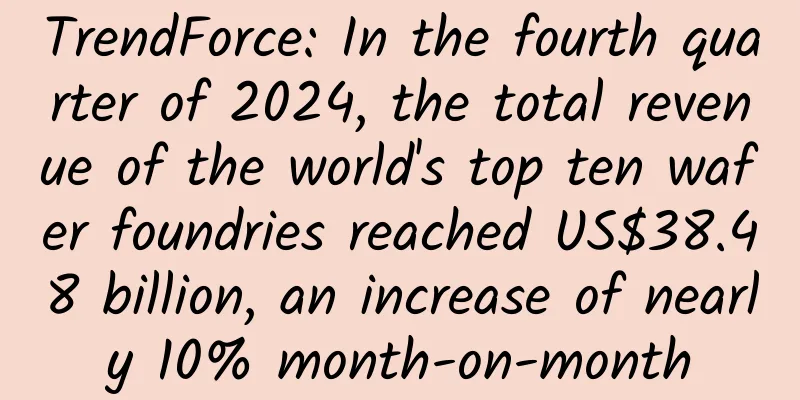Are autonomous vehicles generally more reliable than human drivers? | Technology Weekly

|
Compiled by Zhou Shuyi and Wang Xiang In most scenarios, autonomous driving is more reliable than human drivers Autonomous driving technology has developed rapidly in recent years, and its safety has attracted much attention. The "2018 Global Status Report on Road Safety" released by the World Health Organization shows that about 1.35 million people die in traffic accidents every year, and 94% of traffic accidents are caused by human error. Autonomous driving has sophisticated sensors and algorithms, which are expected to reduce human errors and make the driving environment safer. A new study published in Nature Communications on June 18 confirms the above view: in most scenarios, autonomous vehicles have a lower accident rate than human-driven vehicles. The researchers compared accident data from 2,100 autonomous vehicles and 35,133 human-driven vehicles between 2016 and 2022, mainly from California, USA. They found that autonomous vehicles were safer and less likely to have accidents when performing routine driving tasks, such as maintaining lane position and adjusting position according to traffic flow. In addition, autonomous vehicles have a lower risk of rear-end collisions and side collisions, with the risks reduced by 50% and 20% respectively compared to human driving. However, in certain situations such as low light conditions at dawn and dusk and when turning, autonomous vehicles appear to be more prone to accidents, with accident rates 5.25 times and 1.98 times higher than those of human drivers, respectively. The researchers said the new study reveals the difference in risk between autonomous and human-driven cars, and highlights the importance of addressing the current limitations of technology. AIDS prevention drug data is impressive: one injection every six months, 100% effective On June 20th local time, the biopharmaceutical company Gilead Sciences announced that its new HIV prevention drug Lenacapavir showed 100% effectiveness in a trial to prevent HIV infection in cisgender women. The results of the interim analysis of the Phase 3 clinical trial "PURPOSE 1" were announced this time. The clinical trial recruited more than 5,300 female volunteers aged 16 to 25 in South Africa and Uganda. They were randomly divided into three groups in a ratio of 2:2:1 and received Lenacapavir, Descovy, and Truvada for HIV pre-exposure prevention (PrEP). Among them, Descovy and Truvada are once-daily oral medications, both of which are currently available in China; Lenacapavir is a capsid inhibitor that is injected subcutaneously once every six months. The results showed that none of the 2,134 women in the Lenacapavir group were infected with HIV. Among the 1,068 women in the Truvada group, 16 were infected with HIV (incidence rate was 1.69 cases/100 person-years), and the Descovy group had a similar incidence rate (39/2,136, incidence rate was 2.02 cases/100 person-years). The background incidence rate in the trial area was 2.41 cases/100 person-years. Lenacapavir's pre-exposure prophylaxis achieved both the primary and secondary endpoints. In the trial, Lenacapavir was generally well tolerated, and no major or new safety issues were found. In view of the excellent performance of the new drug, the independent data monitoring committee has recommended that Gilead stop the double-blind method and provide Lenacapavir to all volunteers participating in the clinical trial. Linda-Gail Bekker, director of the Desmond Tutu AIDS Center at the University of Cape Town in South Africa and former president of the International AIDS Society, said: "If approved, the semi-annual Lenacapavir PrEP drug will provide an important new option for HIV prevention, allowing many people around the world to benefit from PrEP drugs, especially women." According to CNBC, Gilead needs to replicate these results before seeking approval from the US FDA. Gilead expects that another Phase 3 trial of the project, "PURPOSE 2", will announce results by the end of 2024 or early 2025. The trial targets men who have homosexual sex. If the results are positive, Lenacapavir for PrEP could be available as early as the end of 2025. Some experts say that the main advantage of Lenacapavir is that it only needs to be injected once every six months, which greatly improves patient compliance. Existing PrEP drugs can also achieve almost 100% protection rate, but most of them require daily medication. However, Lenacapavir is not cheap. According to Reuters, Lenacapavir injection treatment costs up to $40,000 per year. Former OpenAI chief scientist launches new company to focus on safe superintelligence One month after leaving OpenAI, Ilya Sutskever, co-founder and former chief scientist of OpenAI, posted on the social platform X on June 20, announcing the establishment of a new company SSI (Safe Superintelligence). SSI released an announcement on the same day, saying that the company has only one goal and product: secure super intelligence. "SSI is our mission, name, and entire product roadmap because it is our only focus. Our team, investors, and business model are all committed to achieving SSI." According to philosopher Nick Bostrom's definition, superintelligence "far exceeds human cognitive performance in almost all relevant areas." The industry has not yet reached a consensus on whether superintelligence can be achieved. Ilya Sutskever speaks at Tel Aviv University on June 5, 2023. According to Bloomberg, SSI is a "purely research-based organization that aims to create secure, powerful artificial intelligence systems, with no plans to sell AI products or services in the short term." In an interview, Sutskevi said the new company will not be profitable in the short term, but will focus on secure superintelligence. "It will be completely free from external pressure, will not have to deal with large and complex products, and will not have to get involved in fierce competition." Sutskevi was vague about how to make AI safer, but he confirmed that in order to ensure safety, the new company will try to make engineering breakthroughs from the root of the AI system, rather than adding "temporary guardrails" to existing technologies. "At the most basic level, safe superintelligence should not harm humans on a large scale," and after that, "we hope it can operate on the basis of some key values." SSI's vision goes far beyond large language models (LLM) and general artificial intelligence (AGI). For current AI, "you ask, it answers, and then nothing happens." Sutskevi pursues AI that is more general and extensible. He describes it as "a giant super data center that can autonomously iterate technology" and "hopes to contribute to its security." According to the New York Times, Sutskevi will continue to serve as chief scientist at the new company, "responsible for revolutionary breakthroughs." In addition to Sutskevi, SSI has two co-founders. One is Daniel Gross, the former head of AI at Apple, who participated in the creation of the search engine company Greplin (later renamed Cue); the other is Daniel Levy, who worked with Sutskevi at OpenAI. Sutskevi declined to name financial backers or say how much money had been raised, but Gross said in an interview that raising money would be "not a problem." Do you have recurring back pain? Try this exercise A new study shows that walking can effectively reduce the recurrence of low back pain. Repeated episodes of low back pain are not only physically and mentally exhausting, but can also lead to serious consequences such as disability, placing a heavy burden on individuals and society. According to statistics, more than 619 million people worldwide suffered from low back pain in 2020, and about 70% of patients will suffer from another episode within 12 months of recovery from the first episode. Previous studies have shown that exercise can reduce the recurrence of low back pain, but these interventions often require specialized equipment and close guidance, and the procedures are cumbersome and costly. Is there a simple way to prevent recurrence of low back pain? The researchers conducted a randomized controlled trial and included 701 participants aged 20 to 82 years (average age 54 years), of which 565 were women. They lived across Australia and had experienced low back pain in the past 6 months, but had not been diagnosed with a specific cause of pain (such as fracture, infection or cancer). The researchers randomly divided the participants into an intervention group (351 people) and a control group (350 people). The intervention group was asked to receive six instructions from a physical therapist over a six-month period. In the first, third, and fifth instructions, the physical therapist helped the subjects develop a personalized, progressive walking plan, with the goal of gradually increasing the amount of exercise to five walks a week and at least 30 minutes a day over a six-month period. The plan was adjusted according to the specific circumstances and needs of the participants. The remaining three instructions were brief check-ins of less than 15 minutes to identify problems and monitor progress. By week 12, the participants walked an average of 130 minutes per week. The control group did not receive such instructions or walking plans. All participants were free to seek additional interventions and treatments. Subsequent follow-up showed that walking significantly delayed the recurrence of low back pain: the median number of days to low back pain recurrence in the intervention group was 208 days, while the median number of days to low back pain recurrence in the control group was 112 days. Researchers said that it is not clear how walking prevents recurrence of low back pain. It may be that gentle exercise strengthens the spine and muscles, or it may be that walking promotes the secretion of endorphins, releases stress and relieves pain. However, it is certain that walking brings many benefits, not only good for heart health, but also improves mood and sleep, and reduces the risk of many chronic diseases. The healthier your mind is, the healthier you will age. The relationship between mental health and physical health has always been controversial. Existing studies have shown that positive mental health is associated with healthier aging. However, the causality of this relationship has been unclear, largely due to potential confounding factors (such as personal socioeconomic status) and the challenge of reverse causality. A new study published in Nature Human Behaviour on June 17 showed that mental health is associated with healthy aging, and this association is not affected by socioeconomic status. The researchers used eight data sets covering 800,000 to 2.3 million people to analyze the impact of mental health on different aging outcomes. They found that individuals with higher levels of mental health tend to experience healthier aging, characterized by increased tolerance, higher self-rated health, and longevity. Income, education, and occupation are all associated with mental health status, with increased income having the strongest correlation. In addition, after screening 106 candidate mediating factors, the researchers found that reducing sedentary behavior, smoking, and increasing cheese and fruit intake may promote mental health and healthy aging. Voyager 1 resumes sending back scientific data NASA recently announced that Voyager 1, the most distant spacecraft from Earth, has resumed transmitting scientific data back to Earth. According to the Associated Press, this is the first time Voyager 1 has started carrying out scientific missions since a technical failure in November last year. Rendering of Voyager 1 Last November, one of Voyager 1's three onboard computers failed and stopped sending readable science and engineering data to Earth. In April of this year, the engineering team resolved some of the technical glitches, and Voyager 1 successfully sent back readable engineering data to Earth to report its operating status. On May 19 this year, the engineering team further carried out repair work and ordered Voyager 1 to resume sending scientific data. The two scientific instruments subsequently resumed normal operation. On June 14, NASA announced that all four scientific instruments are now able to send scientific data back to Earth. These instruments can be used to study plasma waves, magnetic fields, and particles. NASA launched Voyager 1 and Voyager 2 in 1977 to explore the solar system and interstellar space. They are the only two man-made spacecraft that have left the solar system and entered interstellar space, and are currently about 24 billion kilometers and 20 billion kilometers away from the Earth, respectively. Special Tips 1. Go to the "Featured Column" at the bottom of the menu of the "Fanpu" WeChat public account to read a series of popular science articles on different topics. 2. Fanpu provides a function to search articles by month. Follow the official account and reply with the four-digit year + month, such as "1903", to get the article index for March 2019, and so on. Copyright statement: Personal forwarding is welcome. Any form of media or organization is not allowed to reprint or excerpt without authorization. For reprint authorization, please contact the backstage of the "Fanpu" WeChat public account. |
<<: What kind of cultural charm is hidden in the tea utensils in ancient poetry?
>>: Does electric mosquito repellent have safety risks? Don't make these mistakes when using it
Recommend
Do particles have consciousness?
Although we are talking about the smallest substa...
Case analysis: How can a product achieve user growth?
In recent years, the popularity of online educati...
The Juggler's Method txt Baidu cloud, The Juggler's Method pdf Baidu network disk!
The Juggler's Method txt Baidu cloud, The Jug...
The subscription account is full of red dots, and 95% of the fans are out of touch! How can public accounts awaken dormant fans through operations?
It is becoming increasingly difficult to run a pu...
How much does it cost to invest in the Xiaogan appointment mini program? What is the investment price for the Xiaogan appointment mini program?
Xiaogan appointment app investment promotion is g...
The science behind mutual attraction
Usually, when we fall in love with someone, it se...
The most undesirable bug in Android: No fix in sight
Android 5.1 has been pushed to many Nexus devices...
How much "junk DNA" is hidden in your body? Their mission is mysterious
In life, everyone is familiar with what garbage i...
What does SEO strategy mainly include?
What does SEO strategy mainly include? A few year...
Did ancient Chinese drink boiled water? The answer is surprising
In our daily lives, drinking boiled water has bec...
Revealing the secret of Toutiao’s user growth!
Toutiao has always been criticized for its vulgar...
9 models to teach you how to quickly master content marketing
This article summarizes the 9 major architecture ...
The M9 is a milestone for Huawei in the global automotive industry
After the Ideal L9 and other competitors were alr...
Hongqi's sales volume increased by 133% year-on-year in May, and the high-end strategy of its own brands has begun to show results
The outbreak of the epidemic is undoubtedly a dis...
Let's talk about phantom types in Swift
Preface Ambiguous data is arguably one of the mos...









